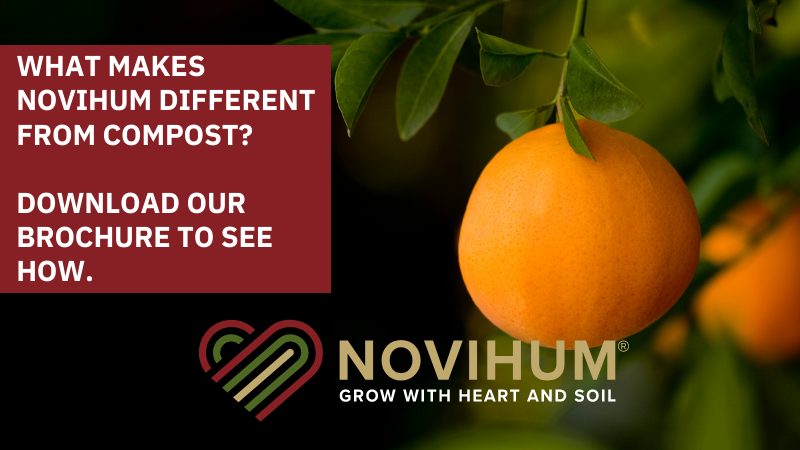The Time Is Now for Almond Growers To Cut the Dust
Editor’s Note: “In a previous version of this article, the ‘Sonora’ variety was described as self-pollinating, which it is not, nor was it introduced by Burchell Nursery. It was introduced by the University of California, Davis in 1983. In addition, ‘Yorizane’ will be available from all nurseries in California in 2022. This information has been corrected in the article. We regret the error.”
There are a lot of reasons for almond growers to want to cut the amount of dust in their orchards — being less hospitable to pest mites and hull rot fungus would be two right at the top early in the season — though cutting it by 50% seems a difficult goal. But that’s exactly what the Almond Board of California (ABC) has for one of its Almond Orchard 2025 Goals.
Most of that dust is generated at harvest, and because an estimated 75% of the dust associated with harvest is generated primarily during sweeping and pickup, that’s the ABC’s focus. There are a number of ways to cut the dust during sweeping and harvest, Jesse Roseman, ABC Principal Analyst, Environmental and Regulatory Affairs, says.
The newest of these, off-ground harvesting, which Roseman terms “revolutionary,” would eliminate sweeping altogether, catching the nuts before they hit the ground. It’s a method used in other almond-producing countries such as Australia, Spain, and Israel, and some California growers are experimenting with off-ground harvesting.
“If we’re going to meet our goals,” he says, “it looks like we’ll need some growers to adopt off-ground harvest, because that creates basically zero harvest dust.”
Another key to meeting the ABC goals is the adoption of the newer low-dust harvesters that virtually all the industry equipment suppliers are producing, Roseman says. Incentive programs are a major aid in getting more widespread adoption of these low-dust harvesters, and both the National Resource Conservation District and the San Joaquin Air Pollution Control District offer them. Access to incentive programs may depend on operation size, so be sure to check eligibility requirements.

Grant Zaiger, left, and his late father Floyd, showing off the ‘Independence’ self-pollinated almond in 2011, the first year the variety was widely planted.
Photo by David Eddy
SELF-POLLINATION HELPS
Another measure that can help meet the goal, Roseman says, is planting of self-pollinated almond varieties.
“If you use pollinators, you need to harvest and sweep twice,” he says. “With self-pollinators, you generally harvest just once and sweep just once.”
Roseman points to the huge variety change in the state over the past decade. Indeed, the ‘Independence’ variety, the first of the self-pollinated varieties to be widely planted, now ranks fifth among all almond varieties, remarkable as widespread planting began only a decade ago.
However, ‘Independence’ plantings have decreased markedly in the past four years. That can in part be explained by the decreased planting throughout the state as growers have sustained the lowest prices in a couple of decades. In fact, even plantings of the industry flagship variety, ‘Nonpareil’, have dipped markedly in recent years, and only about 1,000 more acres of it were planted than of ‘Independence’ in 2020.
‘Independence’ was developed by Zaiger Genetics, and Grant Zaiger says there is another factor at work. Now that there are nearly 45,000 bearing acres in the ground, he says growers are struggling to harvest them because the state’s harvest contractors are busy.
Zaiger has another self-pollinated variety out, ‘Liberty’, which is also marketed by Dave Wilson Nursery.
Two more successful self-pollinating varieties are ‘Shasta’ and ‘Pyrenees’ from Burchell Nursery, both of which have seen sales take off in the past few years.
Coming in 2022 is ‘Yorizane’, another self-pollinated variety that will be available from all nurseries in California this spring. It was developed by USDA. In addition, University of California breeders are working on a number of self-pollinated varieties.
FIELD FACTORS
Roseman says growers have their own self-interests when it comes to harvest dust. For one thing, if the orchard floor is uneven or has cracks, setting sweeper head heights can be challenging, as excess dust can be picked up with the nuts and delivered to the huller/sheller, who will charge a cleaning fee.
“Charging based on incoming weight and volume rather than outgoing has become the industry standard,” he says. “It’s a great incentive to bring cleaner loads to the huller/sheller.”
According to the ABC Harvest Dust Tool Kit, custom harvesters and growers should approach each field differently and calibrate equipment for specific field conditions – sandier soil is different than heavier soil, for example. Heavier soil might be prone to cracking, and big soil cracks can hide nuts.
“Nobody wants to leave almonds behind,” he says.
While it also provides economic and pest management advantages, Roseman says driving the industry dust reduction goals is reducing what is often the primary visible reminder that almonds are being grown nearby.
“This is not regulatory, not being forced, we’re just looking improve and be a good neighbor,” he says. “We want to leave no stone unturned, and harvest dust is one area where we are going to move the needle.”









